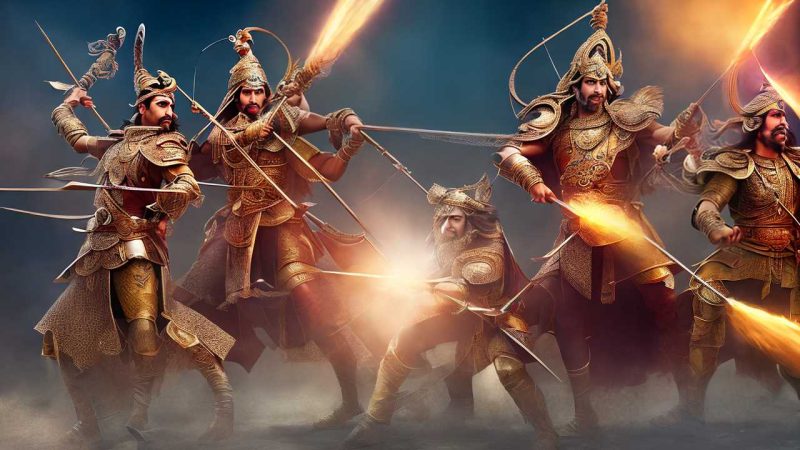The Journey Within by Ramana Maharshi Self Enquiry

In today’s world, where it’s easy to get lost in technology or stick to scientific explanations, the ideas of Ramana Maharshi shine brightly for those who want to look inside themselves and find their true selves. His way of self-reflection asks us to think about a simple yet deep question: ‘Who am I?’ This question encourages us to look past the things we usually identify with and feel the core of who we are.
Maharshi’s teachings are powerful for personal growth, but they can be tricky and sometimes misunderstood. When we start to learn about his self-reflection method, we must be careful to grasp the finer points. Understanding ourselves deeply is challenging but ultimately very fulfilling.
How do we genuinely practice this self-reflection? What clues can help us as we move into the lesser-known parts of our inner selves? The answers might not come to us easily, but looking for them can change us in important ways.
Let’s give an example. Suppose you always identify yourself as a ‘good listener’. By asking ‘Who am I?’ you might discover that you listen well because you’re naturally empathetic, not just because it’s expected of you. This realization could lead you to use this trait in new, fulfilling ways – maybe by volunteering to support others.
In summary, Ramana Maharshi’s teachings push us to ask deep questions about our identity, leading to a path of self-discovery that is both challenging and enriching.
Understanding Self-Inquiry
Self-Inquiry is a simple yet deep practice taught by Ramana Maharshi. It involves asking yourself the question, ‘Who am I?’ The goal is to look past everyday thoughts and feelings to find out what’s at your core—your true self that’s not just your personality or your body. When you do Self-Inquiry, you’re not just thinking about things; you’re trying to understand what consciousness is all about. It’s like taking apart your experiences layer by layer until you reach the core of your being, which is different from your changing self.
Why does this matter? Because Maharshi’s teaching is based on the idea that we’re all connected to a bigger, universal consciousness. We’re not alone or separate. When you practice Self-Inquiry, you’re not just learning about yourself. You’re discovering how you’re part of something much bigger. This isn’t just about looking inward; it’s about finding your place in the universe.
Self-Inquiry is more than just thinking about yourself. It’s a journey to a deep understanding that we are all part of one big whole. This understanding can change how you see the world and how you live your life. It’s like when you realize that all the pieces of a puzzle are needed to see the full picture. Each of us is a piece of that puzzle.
In everyday language, think of it as a kind of mental detective work. You’re the detective, and your job is to uncover the truth about who you really are. And this isn’t a truth that changes with time or how you feel that day. It’s about finding the constant ‘you’ underneath it all.
Ramana Maharshi’s Teachings
Ramana Maharshi’s teachings are simple yet powerful. They teach us how to find inner peace and understand who we really are. He believed that we learn the most about ourselves not through books or lectures, but by looking within. Maharshi told us to pay close attention to the feeling of ‘I’ that we all have, because it’s key to knowing our true self. Instead of just thinking about life and its mysteries, he urged us to explore our own consciousness.
Maharshi explained that everything is connected; there’s no real separation between our individual self and the wider universe. By understanding this, we can see that our egos, the part of us that feels separate and unique, don’t tell the whole story of who we are. He encouraged us to let go of our egos and experience life as it is, full of awareness and joy, what he called ‘sat-chit-ananda.’
For example, when we meditate, we might focus on our breath or a mantra, but Maharshi would say to also pay attention to the sense of ‘I’ that is experiencing the meditation. This can lead us to a deeper understanding of ourselves as part of the larger whole.
In his talks, Maharshi broke down these ideas in a very detailed way, challenging us to really think about our existence. He didn’t want us to just accept these ideas blindly. Instead, he wanted us to experience the truth for ourselves.
The ‘Who Am I?’ Method
The ‘Who Am I?’ method is a simple way to get to know yourself better. It comes from the teachings of Maharshi, who focused on self-awareness. Instead of being a basic question, it’s a technique to help you look beyond what you usually think of as yourself—like your body, feelings, or thoughts. These things change all the time, but the ‘Who Am I?’ method helps you find the part of you that doesn’t change. This part is the silent observer of everything happening around and within you.
By asking yourself ‘Who am I?’ over and over, you start to focus less on temporary things and more on this permanent part of yourself. This is important because it helps you see yourself in a clearer light, without getting confused by things that come and go. It’s like peeling an onion to get to the very center. This process can lead you to feel more at peace and even help you on your spiritual journey.
For example, imagine you’re feeling really angry. If you use the ‘Who Am I?’ method, you remind yourself that the anger is just passing through and that deep down, you are just watching it happen. This can help you feel less caught up in the anger. It’s like realizing you’re not the storm, just someone watching it from a safe place.
Using easy-to-understand language and making the flow of ideas seamless, we can talk about this method as if we are having a friendly chat. Everyone can try it, and it might lead to some interesting discoveries about who they are deep down inside. It’s like having a conversation with yourself to find out what’s really at your heart’s core.
Challenges and Misconceptions
The ‘Who Am I?’ technique is a way to learn more about yourself, but it’s not always easy. You might face some tough spots and misunderstandings. For example, your ego doesn’t want to be less important, which can make it hard to really understand who you are. Some people also get it wrong and think this method is just about thinking hard, when it’s actually a deep dive into who you are as a person. Plus, it can be tricky to feel the real you, separate from your thoughts, which sometimes leads people to stop their search too soon or to think they’ve made spiritual progress when they’ve just hit a new mental state.
So, it’s essential to keep going and be smart about your journey.
To make it clearer, think about it like this. If you were learning to ride a bike, you might fall off a few times, and it’s tempting to think you’ve got the hang of it when you haven’t just yet. You need to keep practicing, and not trick yourself into believing you’re a pro cyclist after your first try. It’s the same with the ‘Who Am I?’ method—you need to keep at it and not get mixed up between your thoughts and the real you.
Practical Steps Forward
Starting a journey to find out who you really are requires a clear plan. You need to look closely at different parts of yourself to understand your true nature. Maharshi’s technique asks you to repeatedly question what the ‘I’ thought really means. It’s important to look inside yourself and tell the difference between the ‘I’ and the fleeting thoughts and feelings that might confuse you. This isn’t just thinking about it; it’s about really experiencing what’s deep inside your mind. Keep a constant watch on your thoughts, without getting too attached, to separate the real you from the thoughts that aren’t really you. By doing this, you can find the simple truth of who you are. This method isn’t just about knowing yourself better—it changes you deeply and gives you a clearer understanding.
Here’s why this is important: understanding your true self can lead to greater happiness and fulfillment in life. Instead of being driven by temporary emotions or outside pressures, you’ll be guided by a deeper sense of self. Imagine peeling an onion—you remove layer after layer until you reach the core. In the same way, by asking questions like ‘Who am I?’ and paying close attention to your inner voice, you remove the layers of false identity and discover the heart of your being.
Remember, it’s not enough to just think about these questions. You need to immerse yourself in the process. Think of it like diving into a pool to understand how deep it is, rather than just looking at it from the side. You’ll start to notice patterns in your thoughts and learn to let go of the ones that don’t serve you. Over time, this can lead to significant personal growth. Just like learning a new skill, it takes practice and commitment.
Conclusion
In the end, the practice of Self-Inquiry, as taught by Ramana Maharshi, is a powerful way to understand who we really are. The question ‘Who Am I?’ is the heart of this practice. It helps us see past our temporary self, which is tied to our ego, and get a glimpse of our deeper self. But it’s not always easy. People who try this need to watch out for common mistakes and confusions. By taking practical steps, they can look inside themselves more deeply. This could lead them to discover their true self, which is what Maharshi’s teachings about oneness are all about.
Here’s why it’s important: Self-Inquiry isn’t just a thought exercise; it’s a journey to the core of our being. For example, by constantly questioning our thoughts and feelings with ‘Who Am I?’, we start to realize they don’t define us. Instead, we find a constant self that doesn’t change with our moods or circumstances.
When we practice this, we should remember to keep our language simple, avoid repeating the same old ideas, and explain things in a way that makes sense. For instance, instead of saying ‘navigate prevalent challenges,’ we could say ‘watch out for common mistakes.’ We should also write like we talk, to make it easier to understand. And when we explain something, we should give plenty of details to really paint the picture.
One good way to put this into action is by keeping a journal. As you ask yourself ‘Who Am I?’, write down what comes up. This can help you see patterns and get past the surface level of your thoughts. Over time, you will likely notice changes in how you see yourself, which can be a sign of progress on this journey of self-discovery.






